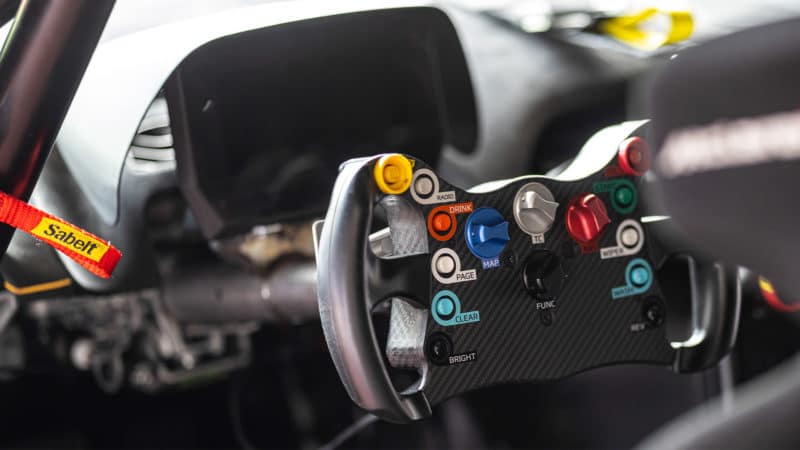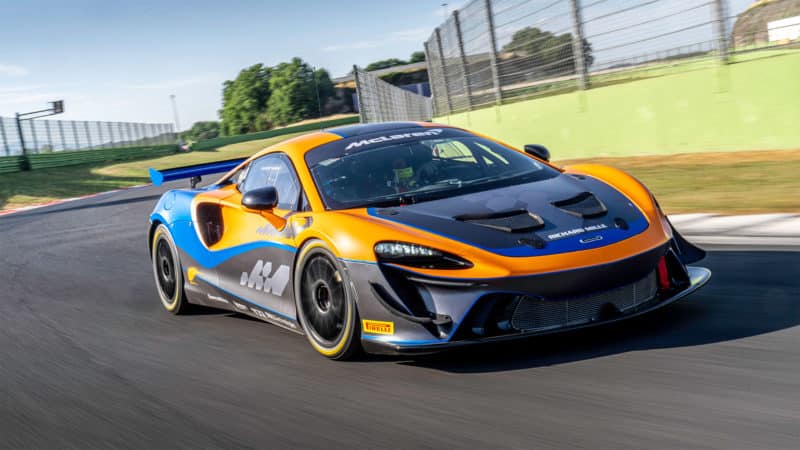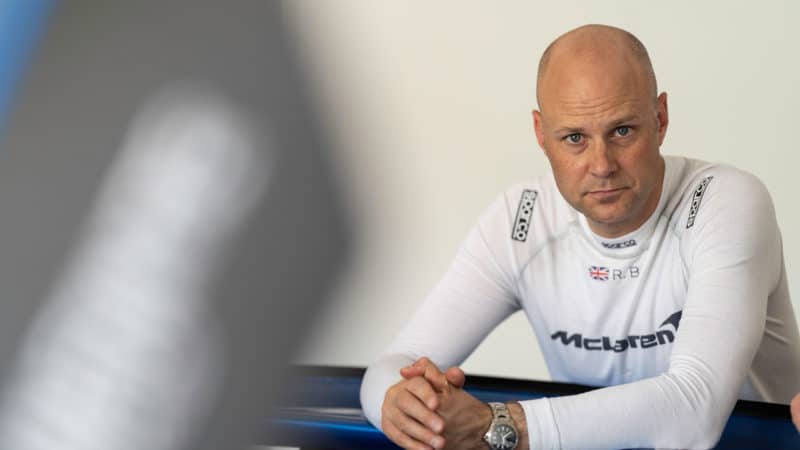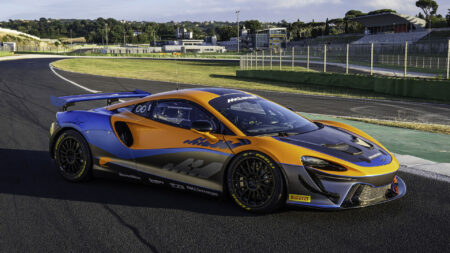“We specifically went for Bosch’s radar CAS system rather than the camera-operated CAS Evo from our GT3 car. It’s more cost-appropriate for a GT4 car and while CAS Evo has a video screen on it, there was a bone of contention on where to package it.” LEDs light up on the left or right of the dashboard to indicate the distance and location of fast-approaching cars. Going for the radar also allows it to hook onto the Artura’s standard wiring loom, keeping the car lighter and simpler. Regulation changes aimed at cost-capping GT4 have seen its wheels switch to five-stud items, while McLaren has moved the front dive planes within the width of the front apron, hopefully allowing them to survive much longer in the cut-and-thrust of GT racing and thus save owners yet more cost.
After demonstrating the GT4 on the Goodwood hill, the team is now headed to Portimao for a 30-hour, race condition test where it’ll attempt to batter the Artura into submission.
“It’s all very well having two cars driven by a small very carefully selected group of drivers,” continues Malcolm. “But then we might sell 200 cars and with the best will in the world anyone could be doing anything with them. So we do have to push towards the very edge of what the car can do and make sure that when it goes into public hands, we’re comfortable and confident that it’s capable.”
While the Artura uses a lighter 3.0-litre V6 engine than its V8-powered predecessor – shorn of any hybrid assistance for the racecar – it’ll be producing similar peak output owing to the regulations of the series it’ll compete in. So while it produces 577bhp in roadgoing form, it’ll be pegged under 500bhp for most circuit use. Its twin turbos live within the V of the engine, which ought to help mitigate the effects of turbo lag.
“With any turbo engine you’ve always got a bottom-end hole that – in the road car – the hybrid element fills,” says Rob. “But we’ve worked really hard to give smooth power delivery and provide different throttle maps we can put in the car for different conditions. It delivers the power really well at the moment – a nice linear feel – so you don’t wait for the big hit of the turbo.”

Artura GT4 has bespoke Bosch electronics, featuring more advanced traction control and a Crash Avoidance System
Newspress
Rob is also happy with the handling, with more motorsport-derived chassis components sharpening up the Artura over the 570S. But not at the cost of approachability, he promises, a key component when selling a racecar to Am drivers.
“The Artura has gone another step forward towards racecar uprights and suspension so it’s a little bit nimbler, with a little bit less roll, but it’s still driver friendly. You don’t want a car which just suits me, one that’s really aggressive but no one else can drive it. You don’t want a twitchy car. So we’ve retained the driveability of the 570 while reducing the roll on it. Ultimately you can push the limits further. So we’re really happy with it.”



